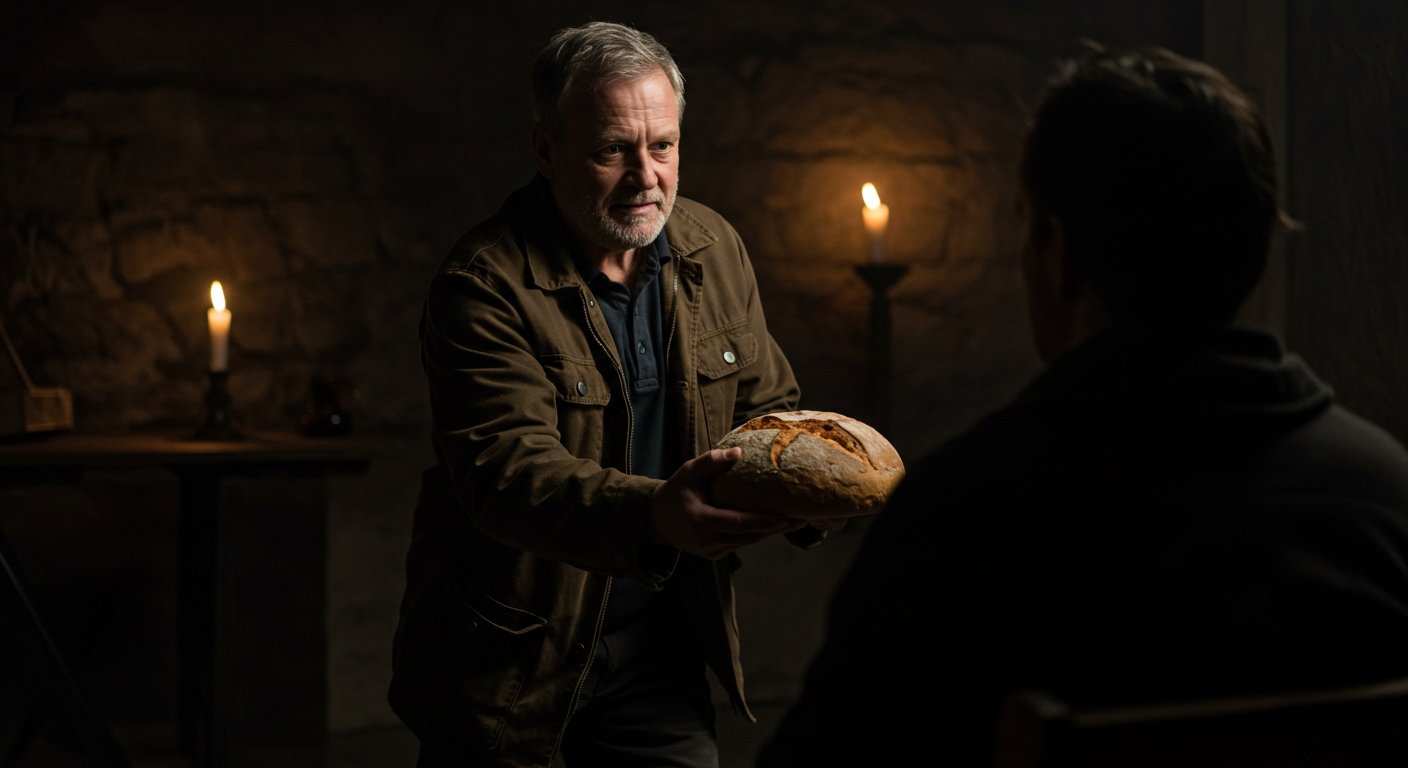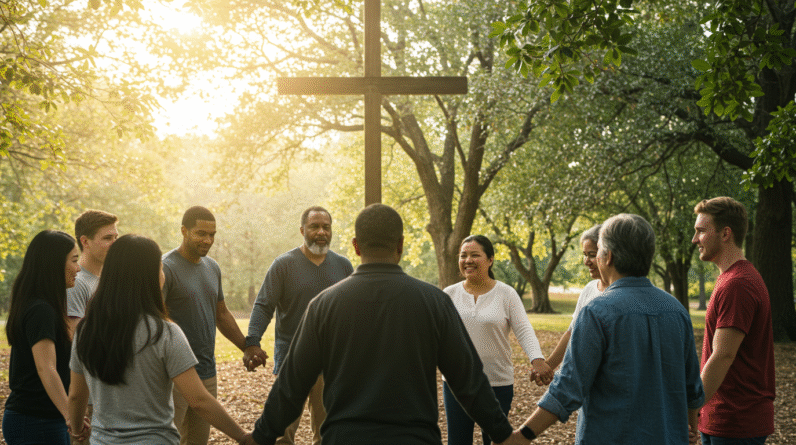Unity In The Early Church: Lessons For Today
When you study unity in the early church, you’re not just dipping into a museum of ancient piety — you’re engaging with a living blueprint for how communities can hold together under pressure, disagreement, and rapid change. The earliest Christians faced persecution, theological confusion, cultural diversity, and logistical chaos, and yet they managed to build a movement that reshaped the Roman world. As you read through the stories and teachings of Acts, Paul’s letters, and Jesus’ prayer for his followers, you’ll find repeated themes: common practices, shared identity, sacrificial service, and a gospel-centered purpose. Those themes are not relics; they’re practical resources you can adapt for your life, your small group, and your local congregation today.
Why focus on unity in the early church?
When you make unity in the early church your lens, you see how the gospel reshaped relationships and social structures. Unity wasn’t an abstract ideal; it was a tangible outcome of shared worship, teaching, and mission. Looking at that model helps you discern what matters most when you try to keep people together in a community where backgrounds, opinions, and temperaments differ. It gives you biblical precedents for balancing doctrinal conviction with relational kindness, for resolving disputes without fracturing mission, and for welcoming diversity while pursuing a common identity in Christ. If you want practical guidance rooted in scripture, studying unity in the early church is a good place to start.
The historical setting: who were “the early church”?
To understand unity in the early church, you need a basic sense of who the early Christians were and what their world looked like. The first Christian communities were small, often house-based gatherings in cities like Jerusalem, Antioch, Ephesus, Corinth, and Rome. They included Jews and Gentiles, rich and poor, Greeks and Romans, slaves and freedmen. They were often marginalized and sometimes violently persecuted. Acts provides the narrative backbone for that period: the apostles’ witness, the spread of the gospel, and the communal rhythms that helped the movement grow. Reading passages like Acts 2:42–47 helps you see the everyday patterns — teaching, fellowship, breaking bread, prayer — that held these communities together.
The first gatherings and their priorities
You’ll notice that the earliest gatherings had clear priorities that shaped their unity. Worship and teaching were central, but so were relationship-building and practical care. Acts describes believers devoting themselves to the apostles’ teaching, fellowship, the breaking of bread, and prayer (Acts 2:42–47). Those priorities created a shared rhythm that cultivated trust and mutual responsibility. When people meet regularly to learn together, pray together, and eat together, they form emotional and theological bonds that make unity more than a slogan—it becomes a lived reality.
Core practices that built unity in the early church
Unity in the early church was not primarily an organizational tactic; it emerged from spiritual and social practices that anchored identity and action. If you look at the New Testament, consistent practices show up in multiple places: communal worship, teaching under apostolic authority, hospitality, generosity, and mutual care. Acts shows you the communal expression; Paul’s letters explain the theological underpinnings. Those practices created a culture where people were more willing to sacrifice comfort for the good of the whole.
Shared worship and teaching
You’ll find that congregational life in the early church revolved around worship and teaching. Acts portrays believers meeting for teaching by the apostles and for sharing meals that reinforced identity and mission (Acts 2:42–47). On the theological side, Paul emphasizes the unity that springs from one Lord, one faith, and one baptism in Ephesians (Ephesians 4:4–6). Those repeated motifs show you how doctrinal clarity and spiritual practice reinforced one another to produce durable unity.
Mutual care and generosity
Part of what made unity in the early church tangible was the way people cared for one another’s material needs. Acts records a dramatic example: believers “had everything in common” and sold property to distribute to anyone in need (Acts 4:32–35). While you might not be called to literal communal ownership, the underlying ethic is clear: unity is deepened when people share resources sacrificially and when the community actively alleviates suffering among its members.
Leadership, decision-making, and authority
Unity in the early church was not a product of laissez-faire collegiality. Instead, it involved apostolic leadership, recognized teaching authority, and communal decision-making that aimed to preserve both gospel clarity and relational cohesion. You can learn from how the apostles guided the church, how elders were appointed, and how disputes were handled.
The apostles and the Jerusalem council
A key example is the Jerusalem council in Acts 15, where apostles and elders met to resolve a major controversy about Gentile believers and the Mosaic Law. The council exemplifies careful listening, scriptural reflection, and a willingness to compromise on nonessentials while affirming core truths (Acts 15:1–29). The outcome allowed diverse believers to remain one body and prevented a schism that could have stunted the mission. When you face disputes, the early church model encourages you to convene wise leadership, weigh Scripture, and pursue solutions that preserve unity without abandoning essential gospel truths.
Appointing leaders and sustaining accountability
Paul’s letters show how local leaders (elders and deacons) were appointed to shepherd communities, teach sound doctrine, and maintain order (Titus 1:5–9). That structure provided stability and a way to address division before it escalated. When you think about building unity today, you should value accountable leadership and clear roles so that disagreements can be addressed promptly and fairly.

Unity amid diversity: theological and cultural tensions
One of the most remarkable features of unity in the early church was its ability to hold theological and cultural diversity together under a shared Christ-centered identity. Jews and Gentiles worshiped side by side, and ethnic boundaries were blurred by the gospel. Paul repeatedly taught that unity does not mean uniformity; rather, it means harmony among diverse members who serve a common head.
The body metaphor and spiritual gifts
Paul’s metaphor of the church as a body is crucial for your understanding of unity in diversity. In 1 Corinthians 12, he highlights that different members have distinct gifts and functions, and the body suffers when parts fail to care for one another (1 Corinthians 12:12–27). That imagery helps you see that unity isn’t about erasing differences; it’s about integrating them so every person’s gift strengthens the whole.
Equality in Christ and social divides
The early church also taught radical equality across social divisions. Paul’s famous statement that in Christ “there is neither Jew nor Gentile, neither slave nor free, nor is there male and female” (Galatians 3:28) didn’t instantly erase societal inequality, but it gave the church an identity that transcended those categories. When you pursue unity today, you often need to push against cultural hierarchies and comfort zones to embody that Christ-centered equality.
Handling conflict: lessons from disagreements
Unity in the early church wasn’t always smooth. Conflicts arose — over doctrine, personality clashes, leadership, and mission strategy. What matters is how those conflicts were handled, and the New Testament offers both positive and negative examples that you can learn from.
Paul’s pleas for unity and rebukes for division
Paul frequently urged unity in his letters and also rebuked factions. In 1 Corinthians 1:10 he urges the church to “agree with one another” and to avoid divisions caused by following human leaders (1 Corinthians 1:10). Those admonitions show you that unity requires intentional moral and spiritual work: refusing to idolize leaders, resolving quarrels, and prioritizing the gospel over personal wins.
When disagreements lead to separation
Not every disagreement in the early church was resolved to everyone’s satisfaction. The split between Paul and Barnabas over John Mark in Acts 15–16 led to their separation for mission work (Acts 15:36–41). That difficult moment teaches you that sometimes unity looks like a painful parting for the sake of the mission. Unity is valuable, but it’s not about suppressing conscience or truth. The goal is faithful witness: sometimes decisions to separate are made to preserve integrity and continue ministry elsewhere.
Unity under persecution: pressure that strengthens or fractures
Persecution was a persistent reality for the early church, and how the community responded to pressure influenced its unity. Persecution scattered believers but also helped spread the gospel and forced churches to rely on spiritual bonds beyond convenience.
Persecution and mission growth
After Stephen’s martyrdom and the ensuing persecution, believers were scattered and took the gospel with them wherever they went (Acts 8:1–4). That scattering actually expanded the mission and created new networks of believers who maintained unity through shared witness rather than geographic proximity. You can draw from this example: when external pressures force you to adapt, unity can survive if it’s rooted in shared purpose and gospel identity rather than institutional comfort.
Shared suffering and deepened solidarity
Paul often wrote about how shared suffering created deeper bonds. In Philippians he encourages believers to stand firm in one spirit, contending together for the faith (Philippians 1:27). When you and your community experience trials together, you have an opportunity to cultivate solidarity and sacrificial love that deepen unity.
Jesus’ model and prayer for unity
If you want the strongest theological anchor for unity in the early church, look at Jesus’ high priestly prayer in John 17. Jesus prays for believers to be one as he and the Father are one — not for uniformity, but for relational oneness that testifies to the world.
The prayer for oneness
In John 17, Jesus prays that his followers “may be one as we are one” so that the world might believe that he was sent by the Father (John 17:20–23). That connects unity in the church with the mission of making Christ known. When you pursue unity, you’re participating in a witness: your relational harmony becomes evidence of the reality and reconciling power of Christ.
Unity as mission, not merely harmony
Jesus’ prayer reframes unity as part of the gospel’s credibility. You’re not aiming for unity merely to be comfortable or popular; you’re aiming for unity because it validates the message you proclaim. This theological perspective helps you prioritize reconciliation and humility when disagreements threaten the church’s witness.
Practical lessons you can adopt today
Studying unity in the early church is only helpful if you translate it into concrete practices. Below are practical steps you can start applying in your community, small group, or personal life.
Prioritize shared spiritual rhythms
You’ll find that regular rhythms of worship, teaching, prayer, and communal meals were foundational in the early church (Acts 2:42–47). Start by building consistent gatherings that center on Scripture and prayer. Those rhythms create shared language, expectations, and spiritual formation that foster unity over time.
Cultivate generosity and practical care
Emulate the early believers’ commitment to mutual care. Acts describes believers sharing resources so no one was in need (Acts 4:32–35). You can’t replicate first-century economics, but you can encourage protocols for benevolence, a visible mercy ministry, and practical support for members in crisis. Small acts of generosity communicate that unity is cost-bearing, not just convenient.
Build accountable leadership with clear roles
Unity needs structures that prevent chaos. Follow the pattern of appointing elders and leaders who are qualified to teach and shepherd the flock (Titus 1:5–9). Leadership should be transparent, accountable, and theologically grounded. When leaders model humility and sacrificial service (as Paul describes in Philippians 2), the community is more likely to follow with trust (Philippians 2:1–11).
Practice conflict resolution early and biblically
Don’t let small disagreements fester. Learn from Paul’s urgings to the Corinthians and Romans about addressing issues directly and privately when possible (Matthew 18:15–17 — while not an early church text, it’s consistent with apostolic practice) and seeking reconciliation quickly. Use Scripture as a check on both extremes: rigid authoritarianism and permissive passivity. Your commitment to timely, humble confrontation preserves unity.
Celebrate diversity and integrate gifts
Encourage people to serve according to their gifts, and teach that differences strengthen the body (1 Corinthians 12:12–27). Intentionally include multiple cultural expressions, languages, and worship styles when possible. Unity is more robust when people see their identities reflected and affirmed in the life of the community.
Anchor unity in the gospel rather than political agendas
A decisive lesson from the early church is that unity must be anchored in Christ and Scripture, not in political ideologies or cultural allegiances. Paul’s letters consistently redirect communities back to the gospel as the basis for unity (Ephesians 4:1–6). If you want sustainable unity, keep the gospel central and clarify that cultural stances are secondary matters.
Obstacles you’ll likely face and how to respond
Pursuing unity is not naïve; it’s strategic and costly. You’ll confront several common obstacles, and the early church gives you both warnings and solutions.
Idolizing leaders
One reason for division in Corinth was people aligning themselves with charismatic leaders rather than Christ (1 Corinthians 1:10–13). You can counter this by teaching people to evaluate leaders by faithfulness to Scripture and by modeling leader humility. Emphasize that loyalty is ultimately to Christ, not to personalities.
Cultural and ethnic friction
Early Christians had to overcome Jewish-Gentile tensions. The Jerusalem council gave a blueprint for resolving such disputes through listening and principled compromises on nonessentials (Acts 15:1–29). In your context, create forums for cross-cultural conversation, proactive hospitality, and policies that protect minority voices.
Consumer mentality and preference-driven worship
When church attendance becomes consumer-driven, unity becomes fragile. The early church’s emphasis on shared sacrifice and service counters this tendency (Acts 2:42–47). Encourage a discipleship culture where members see themselves as contributors rather than consumers; emphasize spiritual formation and mutual responsibility.
Polarizing political and social issues
Political polarization can splinter communities quickly. Anchor your community in theological convictions and charitable engagement rather than partisan identity. Teach members to disagree about public policy with civility and mutual respect, and set norms for how political conversation happens in gatherings.
Small steps you can take right now
You don’t need a council or a perfect plan to start building unity. The early church grew through ordinary, practical habits you can adopt.
- Invite one person from a different background to your small group or meal.
- Start a recurring prayer meeting focused on unity and mission.
- Create a benevolence fund or clear process for helping members in need.
- Teach about unity from Scripture regularly, using passages like Ephesians 4:1–6, Philippians 1:27, and 1 Corinthians 12:12–27.
Each of these small steps models the early church’s practices and starts shaping a culture where unity is a lived reality.
How to measure progress without idolizing metrics
You’ll be tempted to quantify unity by attendance numbers or social media engagement. The early church’s markers of unity are more relational and spiritual: increased mutual care, visible reconciliation, sacrificial giving, and a clear, shared commitment to mission. Use both qualitative and quantitative signs: track whether people are entering into deeper relationships, whether conflicts are resolved swiftly and biblically, whether new believers are welcomed from different backgrounds, and whether your community’s witness is growing.
Stories and testimonies as measures
Personal testimonies and stories of transformed relationships are often more telling than raw statistics. The early church’s vitality is narrated through stories of hospitality, martyrdom, generosity, and mission (Acts 4:32–35, Acts 8:1–4). Encourage storytelling as a way to see how unity is actually shaping lives.
Final reflections: why unity still matters to your mission
Unity in the early church was inseparable from mission. The church’s ability to present a coherent witness in a pluralistic and sometimes hostile environment made people take notice. Jesus linked the church’s unity to credibility: that the world may believe (John 17:20–23). If you want your community to be effective in loving your city and making disciples, you need relational unity that’s grounded in the gospel, practiced daily, and protected by humble leadership.
When you commit to building unity like the early church did, you’re not seeking mere organizational stability — you’re participating in a spiritual witness that demonstrates the reconciling power of Christ. That means you’ll need patience, willingness to sacrifice, and a readiness to learn from Scripture and the practices of those earliest believers.
Conclusion: moving forward with hope and humility
As you reflect on unity in the early church, remember that their model was messy, tested, and deeply gospel-shaped. You don’t need to replicate their situations exactly, but you can adopt their rhythms: regular worship and teaching, generous care, accountable leadership, conflict resolution, and mission focus. These are practical, biblical steps that help communities hold together in love and truth.
Start small, aim for consistency, and keep the gospel at the center. When disagreements arise, return to Scripture and the example of Jesus’ humility. When diversity challenges you, see it as an opportunity to reflect the richness of the body described in 1 Corinthians 12 and the equality declared in Galatians 3:28 (Galatians 3:28). When you live out these practices, you mirror the unity that made the early church so compelling.
Explore More
For further reading and encouragement, check out these posts:
👉 7 Bible Verses About Faith in Hard Times
👉 Job’s Faith: What We Can Learn From His Trials
👉 How To Trust God When Everything Falls Apart
👉 Why God Allows Suffering – A Biblical Perspective
👉 Faith Over Fear: How To Stand Strong In Uncertain Seasons
👉 How To Encourage Someone Struggling With Their Faith
👉 5 Prayers for Strength When You’re Feeling Weak

📘 Jesus and the Woman Caught in Adultery – Grace and Mercy Over Judgement
A powerful retelling of John 8:1-11. This book brings to life the depth of forgiveness, mercy, and God’s unwavering love.
👉 Check it now on Amazon 🛒💥
🔥 “Every great message deserves a home online.” 🌍💬🏡
Don’t let your calling stay hidden. Start a Christian blog or website using Hostinger — with 99.9% uptime, a free domain, and SSL, your voice can shine for God’s glory anytime, anywhere.
💥 Begin today. 🛒 Try it RISK-FREE! ✅
✝️ “Your body is God’s temple — care for it with purpose.” 💪💖🏛️
Renew your energy and restore balance naturally. Mitolyn helps support a healthy metabolism, giving you the vitality to live out God’s calling with strength and confidence.
🔥 Unlock Your Metabolic Power! ⚡Burn More Calories & Feel Great With Mitolyn. 💪
👉 Start Today. 🚀 Check Price Now. 🛒💰
💰 As a ClickBank & Amazon Affiliate, I earn from qualifying purchases.
📖 Acknowledgment: All Bible verses referenced in this article were accessed via Bible Gateway (or Bible Hub).
🚀 Want to explore more? 👉 Dive into our new post on Why Jesus? and experience the 🔥 life-changing truth of the Gospel!








